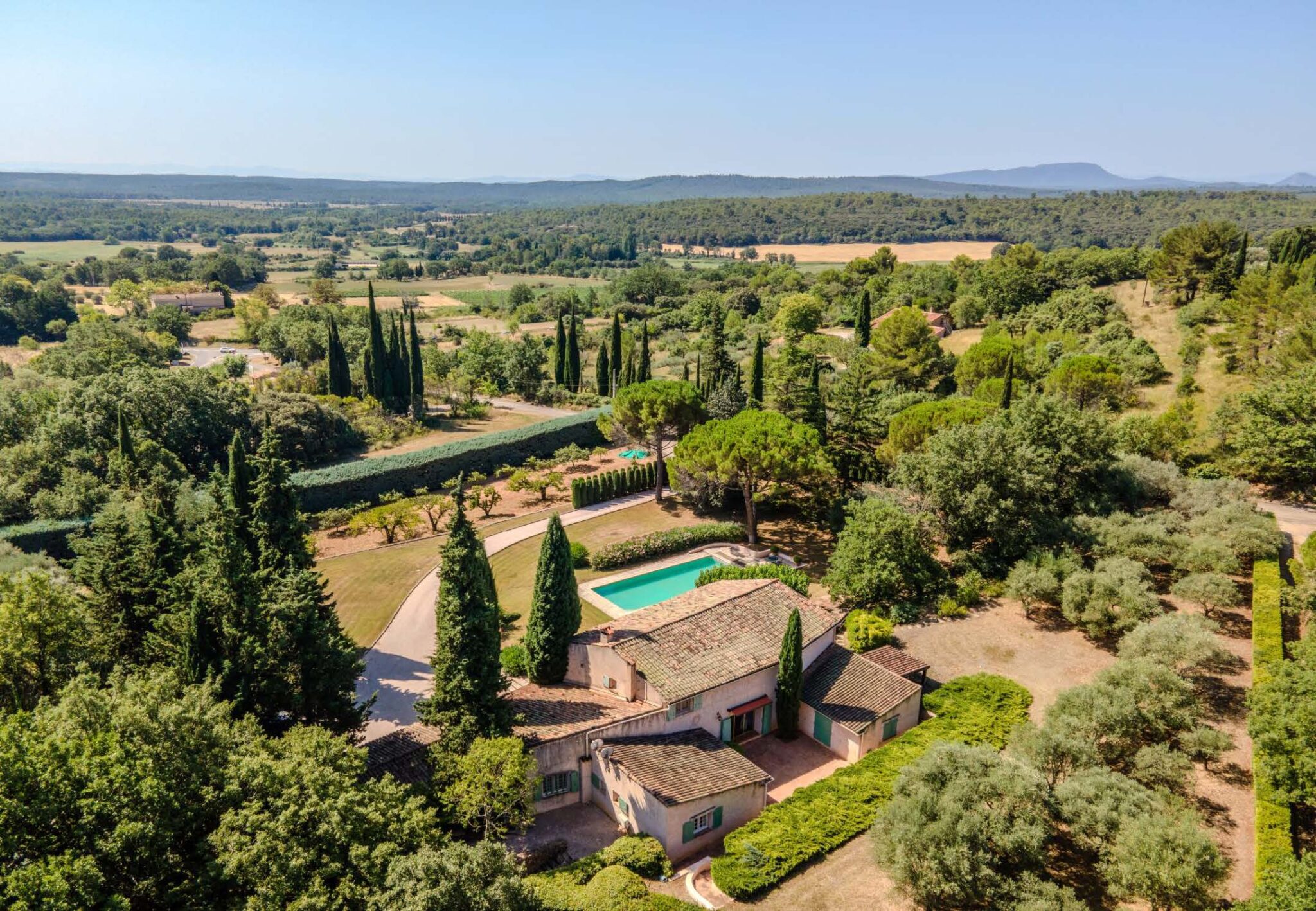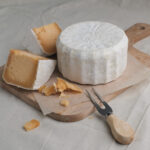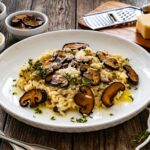An 18th-Century Olive Mill Reborn
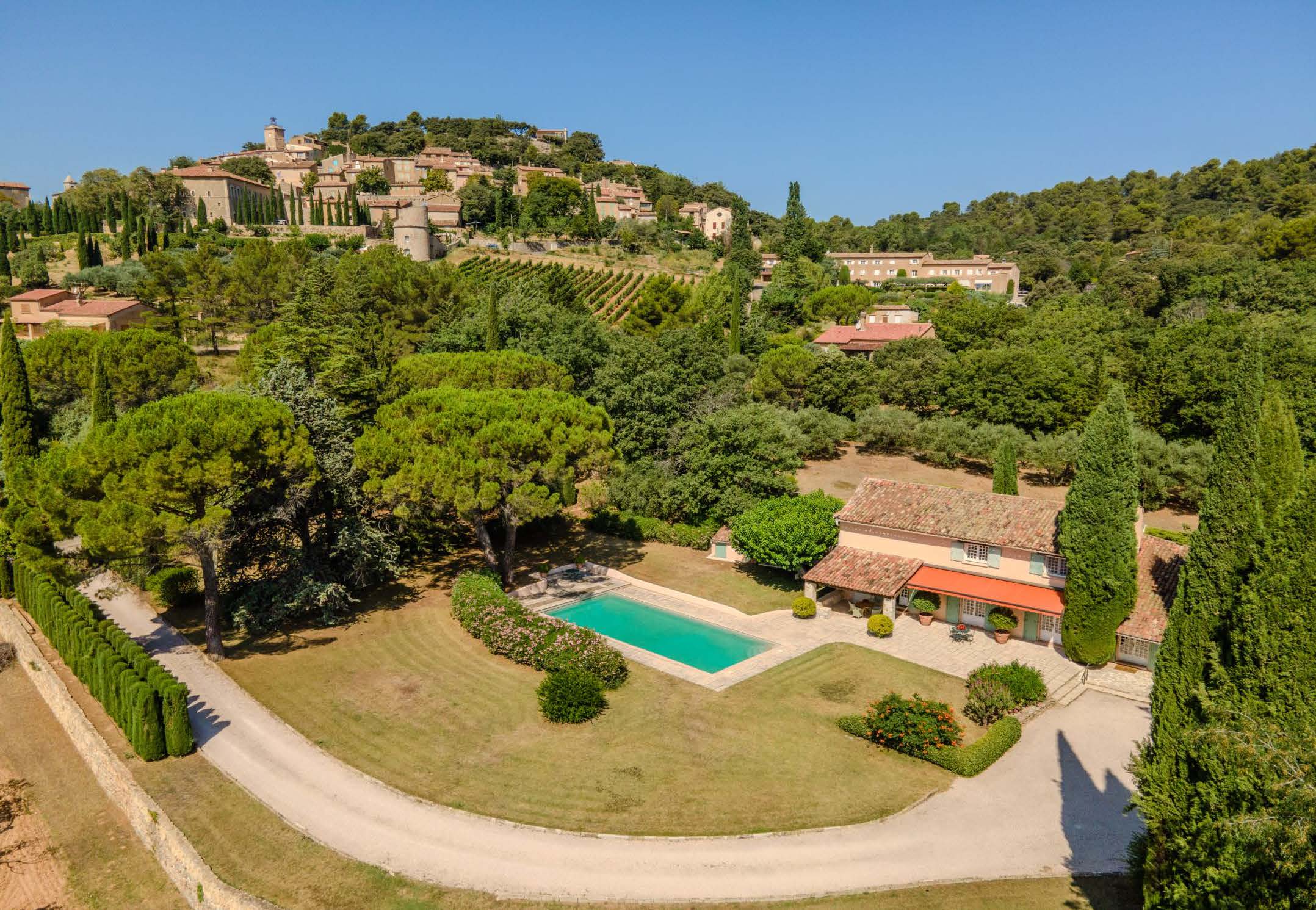
Constantine Gorges-Siebel, the current owner of this remarkable property, recalls how his late father was instantly captivated the first time he set foot here. “It was like love at first sight,” he says. It’s easy to understand why – the home and its surroundings embody quintessential Provence and is nestled in the region’s gentle, rolling hills.
Dating back to the 18th century, the structure still bears witness to its earliest purpose. That of an olive mill. “What’s interesting about the property,” begins Gorges-Siebel, “is that my father had it excavated. There is an old basin where they would wash the olives back in the day. And the large arches in the living room? Those were actually presses. The house was designed in a way like a corkscrew so that they were able to process the oil by hand.”
Although those features of the home are now delegated to the past, the existing olive orchards can still be used in the present. “For those that want the experience,” remarks Gorges-Siebel, “you can still make your own olive oil.”
This home has been transformed through time. From an active olive mill to a residence. “That process of repositioning the building, if you will, from an 18th-century olive oil mill into a résidence secondaire – a secondary residence, like a vacation house or weekend house – that movement became popular in the 50s and 60s.”
The four-acre property is impressive and traditional and the perfect representation of Provençal living. The stone country house which is typical of this region. Surrounding the stone house, there are three olive orchards as well as a fruit orchard, which embody the region’s agricultural history.
“It’s what I call a gentleman’s farmer’s property,” remarks Gorges-Siebel. “My father was a retired executive. While some people play golf and others garden, he liked gardening on a slightly grander scale.”
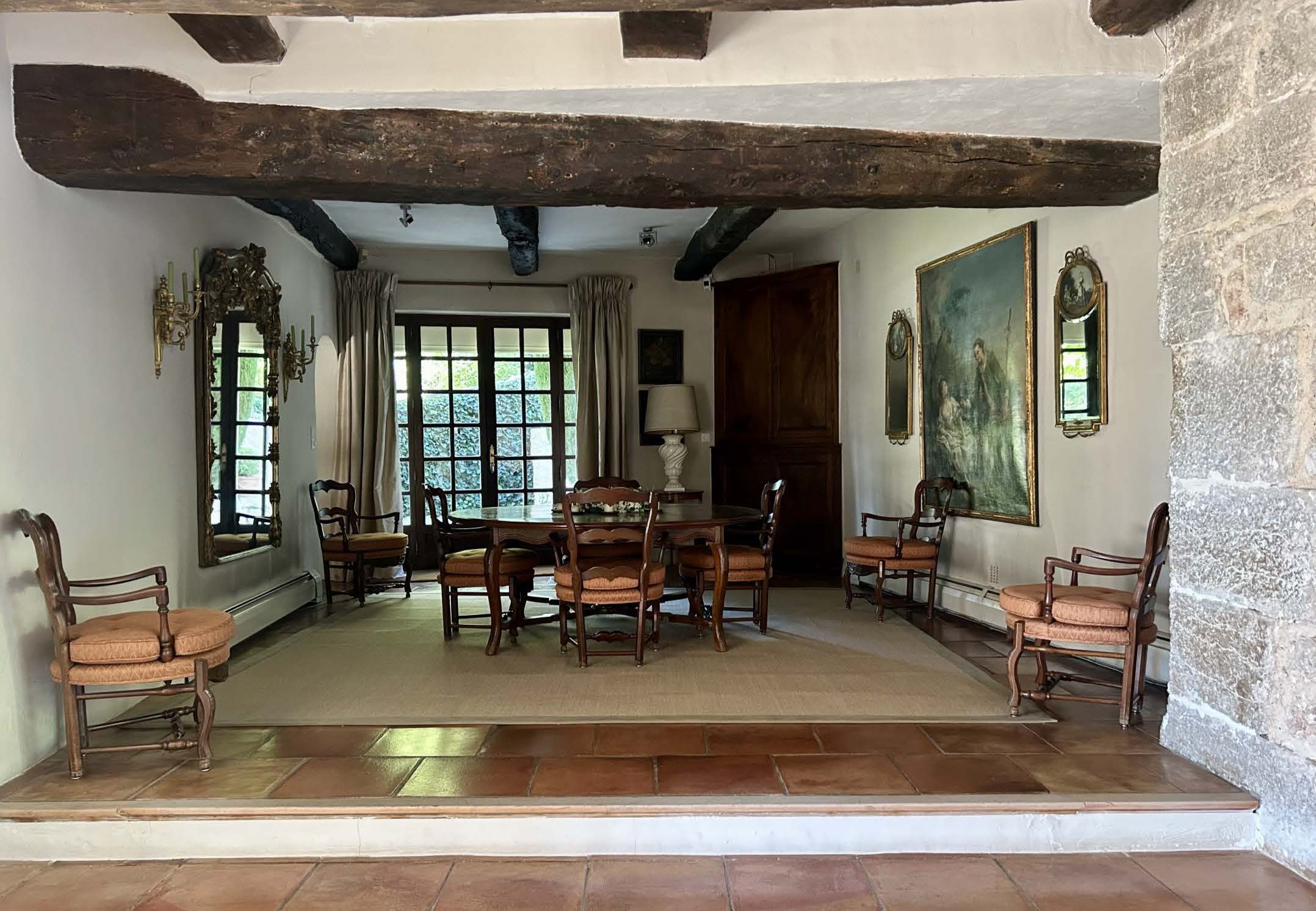

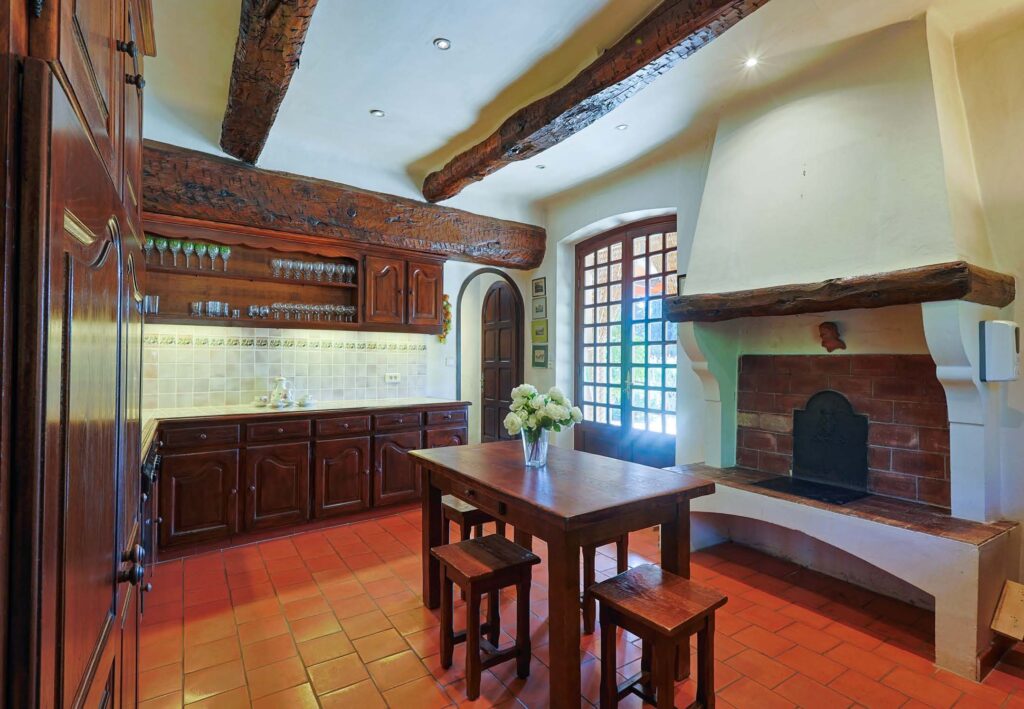
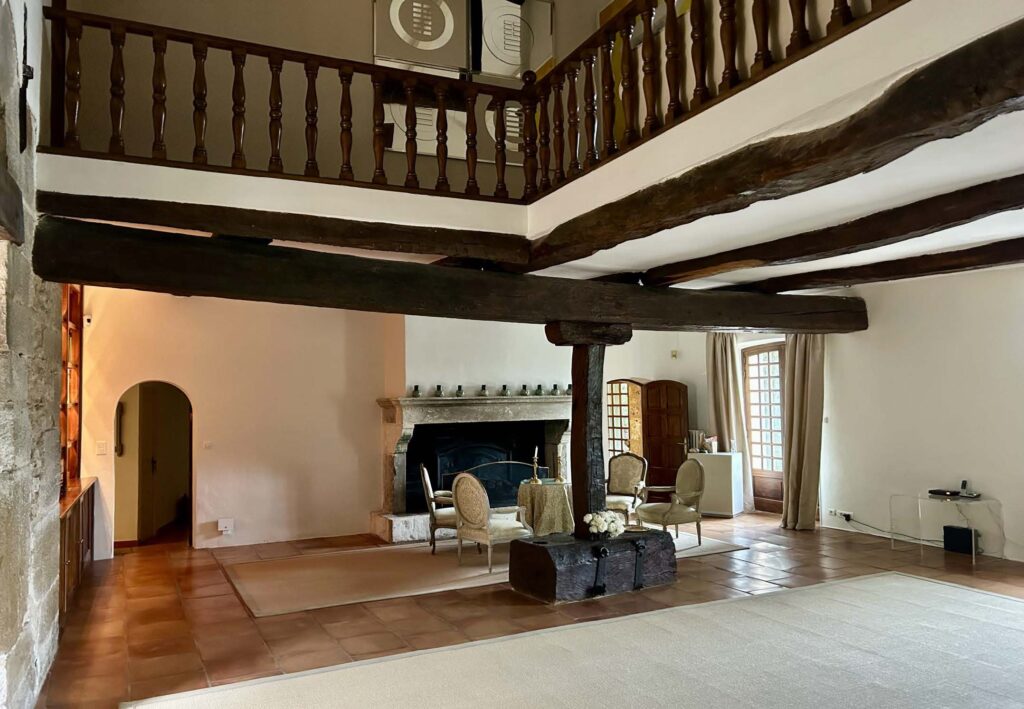
Restoring and Preserving a Historic Soul
Gorges-Siebel is an interior architect who has previously worked with industry icons. “I worked with Peter Marino who is responsible for all the Chanel and Louis Vuitton and Dior stores.” He has also worked on private residences such as one in The Pierre Hotel in New York and a 25,000 square-foot reproduction Château in Dallas for the late Bobby Haas.
Due to his vision and experience, Gorges-Siebel approached updates with a curator’s restraint.
“Essentially,” he begins, “I tried to keep the original context of the property in shape. Not to redo it too much. Because why buy an 18th-century olive oil mill if you’re going to completely change the whole thing? Areas or aspects that were improved were the lighting, building the library, redoing the bathrooms. That kind of a thing…practical upgrades to bring it into the 21st century from a luxury standpoint. I didn’t try to do a modern kind of work on old houses, which you see all the time now. I wanted to preserve the traditional soul.”
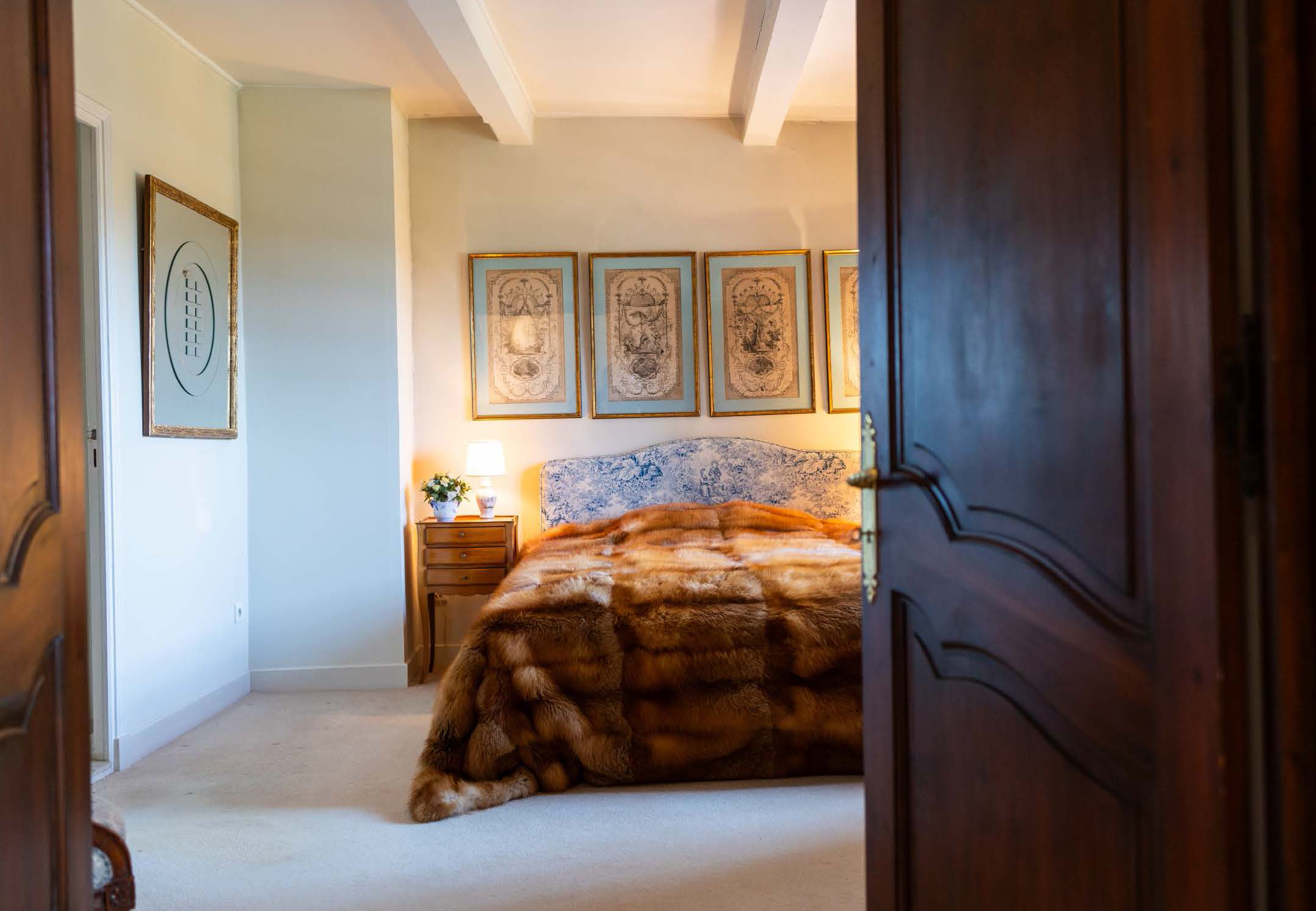
Living in Provence: The Real, Living Cliché
Provence is famous for Van Gogh’s inspirations, lavender fields, rosé, and golden light. Though some may think that Provence is overly romanticized, Gorges-Siebel remarks that this reputation isn’t mythologized. “It’s real. If you go when the lavender is in bloom, and you’re having a bottle of rosé, and you’re in the mood for it, then you’re living the life. That cliché is literally what has spiritually made it famous. It doesn’t disappoint.”
Daily life on the estate is defined by peace. “It’s soothing and quiet,” says Gorges-Siebel. “You’re fully in nature, yet you’re an hour and fifteen minutes from Saint-Tropez and just twenty minutes from Château de Berne which is one of the region’s major vineyards.”
Yet the property is not isolated. Nearby is a jewel of the Provençal countryside, the famed La Bastide de Moustiers. This restaurant, one of the most celebrated by famed French chef Alain Ducasse, is a Michelin-starred haven where farm-to-table dining is surrounded by lavender fields and dramatic mountain vistas. It draws food lovers and design aficionados from around the world.
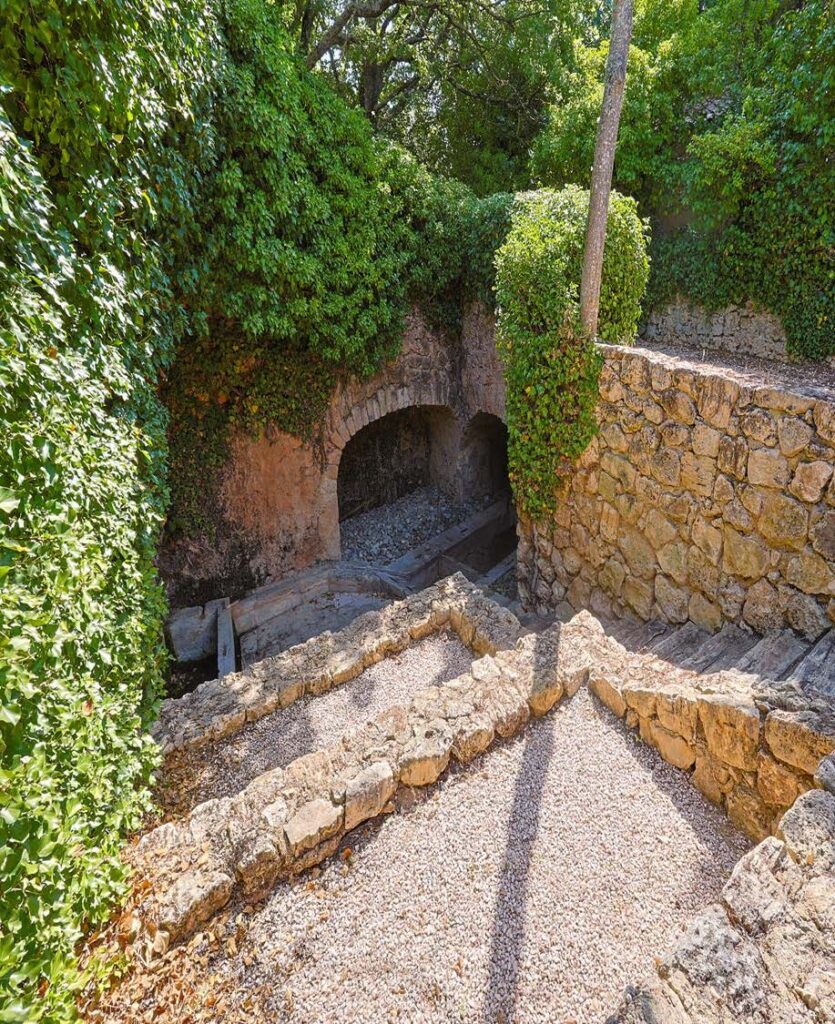
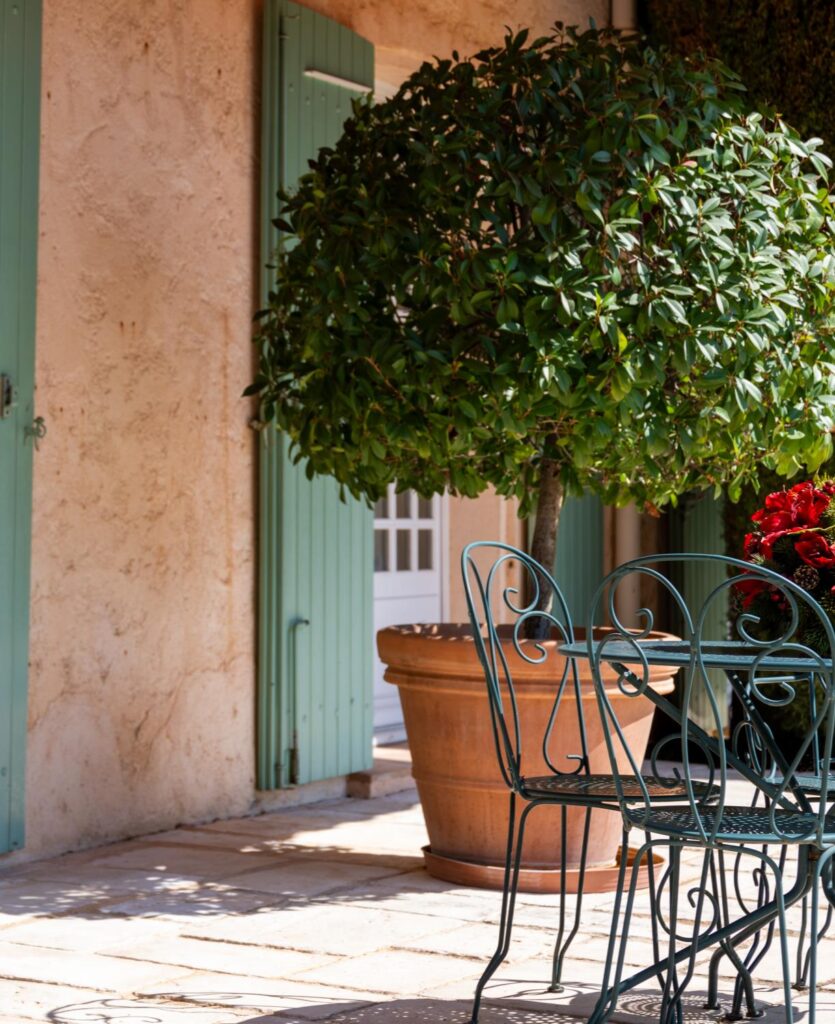


Also close by is the famed winery Château de Berne. Visitors can explore the estate’s beauty on foot or by electric bike, wander through olive groves, or join cooking classes at the on-site culinary school. Wine tastings take place in the château’s tasting cellar, where guests can sample vertical vintages, partake in private food-and-wine pairings, or just soak up the timeless calm of a Provençal evening.
Gorges-Siebel makes mention of Bastide du Calalou, which is just a five-minute walk from the property. This four-star retreat is known for its sweeping valley views and understated elegance. “If guests are visiting, Bastide is in such close proximity, it is almost like a guest house. Friends are comfortable, yet it is very easy to spend time together.”
For day-to-day outings, the nearby village of Aups offers the Provençal blend of simple convenience and old-world charm. Its cobblestone streets are lined with cafés, bakeries, boutiques, and a traditional weekly market, while practical essentials – pharmacy, medical services, and a high-quality supermarket – make it a comfortable, well-equipped hub just minutes from the home.
“It’s rural countryside,” remarks Gorges-Siebel, “but with essential conveniences in close proximity.”
For a home with centuries of artisanship behind it, the estate stands ready for a new story, one that will be shaped by people who appreciate authenticity, heritage, and the rare tranquility of Provençal life. “It’s an extraordinary place,” Gorges-Siebel says. “It’s a quiet, quiet experience. It’s beautiful, and it’s real. It’s exactly what people imagine Provence to be, and that’s what makes it so special.”
This property is available for sale €1,300,000
For more information please contact us at office@theluxurycollectiveuk.co.uk

